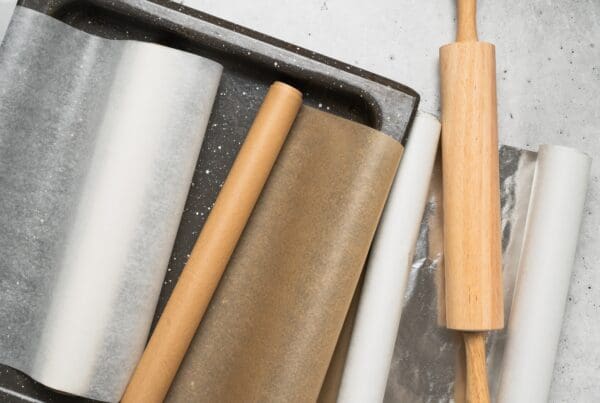The history of paper is inextricably linked with the history of culture and science. The spark that led to its invention was simple but profoundly significant. Humans needed a way to record and share information in written form. That information required a lightweight, durable, and easily transportable medium. Paper met that need, replacing papyrus and parchment with a material that was easier to use and, as new production techniques emerged, cheaper to produce.
Before paper as we know it existed, people communicated through pictures and symbols. They carved images into tree bark, painted them on cave walls, and marked them on papyrus or clay tablets. Early writing relied on natural surfaces long before the invention of paper.
Around 2,000 years ago, inventors in China took communication to the next level by crafting cloth sheets to record their drawings and writings. From this pivotal development, paper as we know it today was born.
Paper first emerged in Lei-Yang, China, where Ts’ai Lun, a Chinese court official, created it by mixing mulberry bark, hemp, and rags with water. He then mashed the fibres into pulp, pressed out the liquid, and hung the thin mat to dry in the sun.
Several centuries later, during the 8th century—about 300 years after Ts’ai’s breakthrough—papermaking spread to the region now known as the Middle East. From there, it took another 500 years before the craft finally made its way into Europe.
Paper entered Europe in the 11th century, following the Arab conquest of Sicily and Spain. However, Europeans quickly dismissed it as inferior to parchment. By 1221, the concern over its fragility grew so strong that Holy Roman Emperor Frederick II banned its use for public documents. The main issue lay in durability: papermakers often used rice starch, which attracted insects and caused the sheets to deteriorate far too quickly.
The history of paper owes much to Fabriano, a small town in Italy’s Marche region. Papermakers there began using linen and hemp in the 12th century. By adopting new equipment and methods, they pioneered major innovations. They mechanised rag grinding with hydraulic hammer mills, slashing the time needed to produce pulp.
They started gluing sheets with gelatine, an additive that insects didn’t like.
They created different paper types and formats.
They invented watermarking.
Watermarking involved using metal wires to add decorations to paper which became visible when the sheet was held up to the light, allowing hallmarks, signatures, ecclesiastical emblems and other symbols to be inserted.
Then, with paper easier to make, paper was used for printing important books, bibles, and legal documents. England began making large supplies of paper in the late 15th century and supplied the colonies with paper for many years.
Industrial paper manufacture began in the 19th century, driven by mass-circulation newspapers and best-selling novels. These demands created an enormous need for cheap cellulose.
In 1797, Louis Nicolas Robert built the first Fourdrinier machine, capable of producing a sheet 60 cm long. As papermaking rags fell short of demand, manufacturers turned to alternatives such as wood pulp.
New techniques for extracting fibres from trees cut costs. Paper prices fell dramatically, and demand turned it into a mass-consumption product. In Britain alone, annual output climbed from 96,000 tonnes in 1861 to 648,000 tonnes by 1900.
Once again, the history of paper intertwined with the history of humankind. As cheap paper spread, everyone could access books and newspapers. This wider access fuelled a surge in literacy among the middle classes. By the turn of the century, people also used paper for toilet and wrapping paper, toys, and interior decoration.




